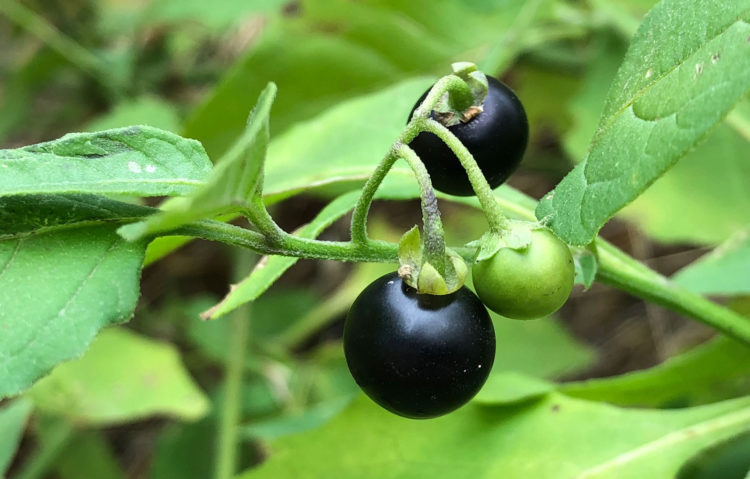
I am just back from the Midwest Wild Harvest Festival, where a big bowl of black nightshade berries (Solanum nigrum complex) dressed the banquet table at Friday’s annual wild potluck. Foragers there are well-versed in the edibility of these diminutive wild treats, which are in the same family as tomatoes, eggplants, and chilies, not to mention a cultivated vegetable called “wonderberry” or “sunberry” that was brought to the prairie states by Volga German immigrants.
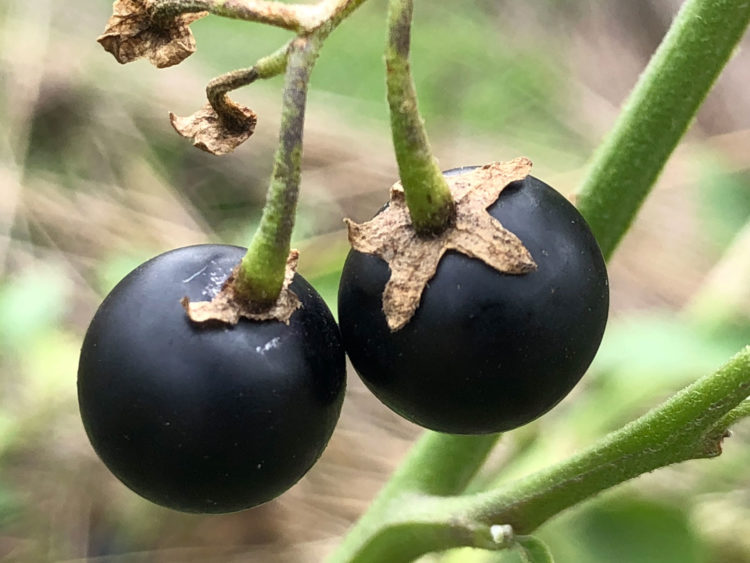
Many people think black nightshade berries are deadly poisonous, apparently due to a confusion of common names with belladonna, a very poisonous, black berry-producing plant that is often referred to as “deadly nightshade.” Confusingly, members of the black nightshade group are also sometimes referred to as “deadly nightshade,” even though their ripe berries are not deadly but instead totally edible. Foraging author Samuel Thayer explains this in his book Nature’s Garden (2010), where he debunks the “black nightshade is poisonous” myth based on extensive research and first-hand experience, and provides the definitive account on how to identify, prepare, and eat black nightshade berries and (young, boiled) greens.
Fortunately belladonna is not common in the U.S., and is furthermore easily distinguished from black nightshade species. It has shiny berries (compared to the often-matte-finish of black nightshade berries), a large calyx that is more than twice as wide as the berry (compared to black nightshades’ small calyx), leaves that are rarely bug-eaten (compared to the often bug-eaten leaves of black nightshade), and singly-borne fruit (compared to the cluster-borne fruits of black nightshade), Thayer explains. Belladonna also has purple flowers, whereas those on black nightshade are whitish.
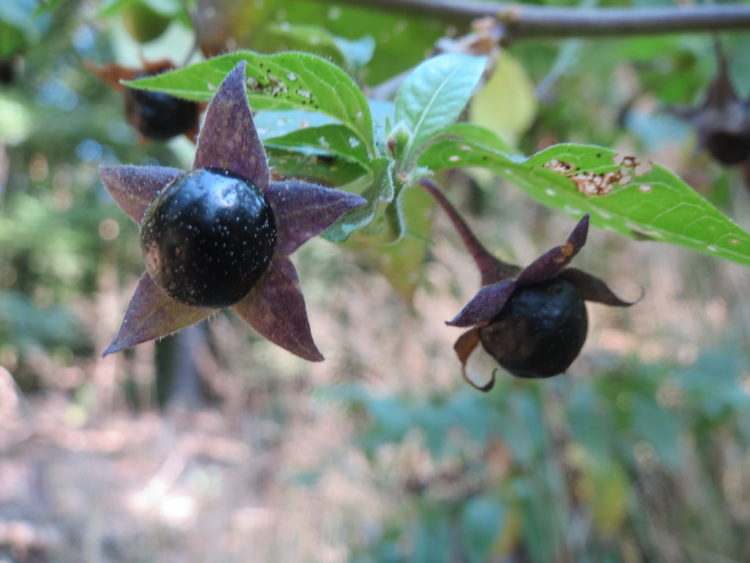
There are other toxic nightshades. Bittersweet nightshade (Solanum dulcamara) produces purple flowers and bright red, oblong berries—so if you can tell fire-engine red from black you should be able to avoid eating this one by accident. Other Solanums in our region produce yellow to green berries. This account is only about those that produce purple-black to dark black berries.
Black nightshades are common to disturbed and agricultural areas around the world, including the lower elevations of Colorado and surrounding states, and east across the Great Plains to the Eastern Woodlands. Hence, road stops along my annual pilgrimage to Wisconsin for the festival are often fruitful. I have collected black nightshade in late September around a fishing pond in eastern Colorado, a well-trafficked trail system in Iowa, and a public parking area in Wisconsin. I’ve also found it growing as a common weed in plenty of places around Denver, including a farm where the gentleman leading our tour noted its similarity to the “wonderberry” of his childhood, with fond recollections of his grandmother’s wonderberry jams and sauces.
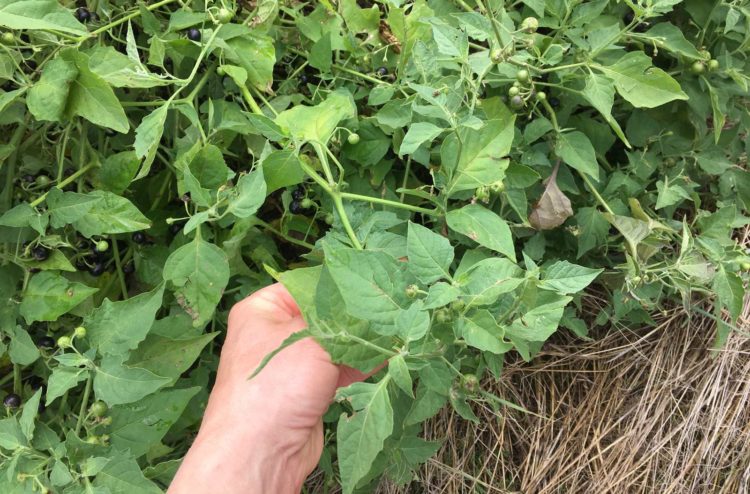
The black nightshades are sprawling plants whose foliage and flowers evoke that of potatoes or tomatoes, but the leaves are simple rather than compound. The berries are full of soft seeds like tiny black tomatoes. Often, I’ll find a plant loaded with berries whose leaves have started to yellow, dry, and fall. The berries on such plants are usually plenty ripe, which is good as Sam advises sticking to ripe berries without green striping. He also suggests starting with small quantities and working your way up, and to not eat the berries if they taste bitter or unpleasant to you.
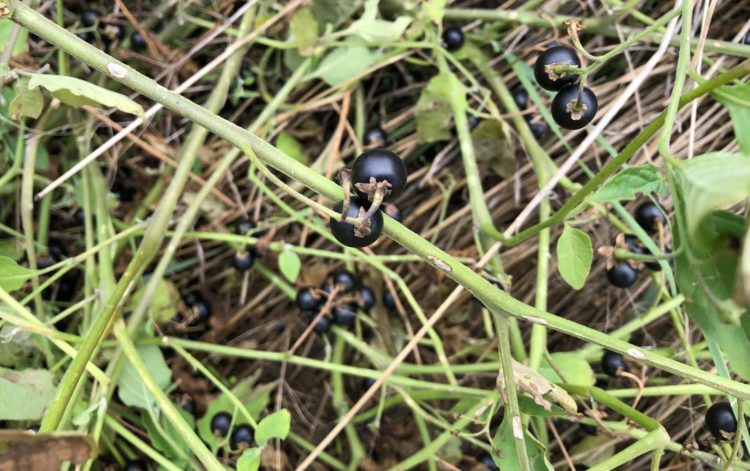
To me black nightshade berries are reminiscent of tomatoes, but sometimes have an edge of bitter at the finish, or a bit of bite like a chili. They cook down to the deepest, most brilliant purple. I love them cooked with sugar as a dessert sweet, whether on ice cream or highlighted by whatever baked goods I can dream up.
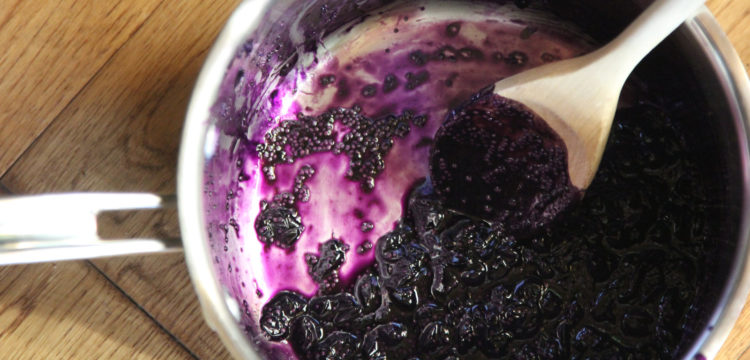
Savory preparations are fun too, from salads to my latest favorite—cooked with peppers, onions, and pork into a green (purple) chili, to be spooned over tamales, enchiladas, or breakfast burritos.
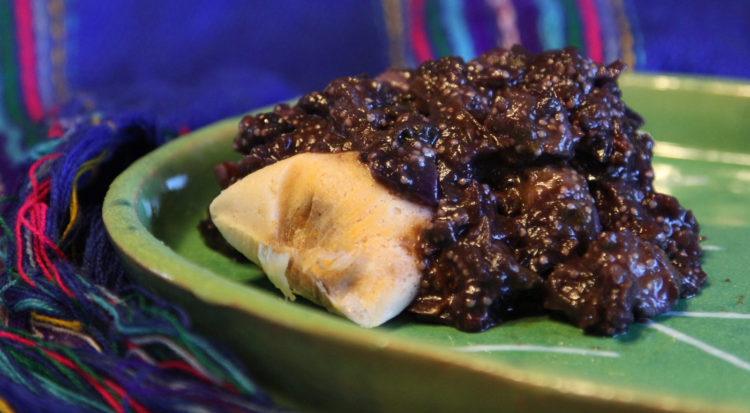
I swear, I need to spend more time in the prairie! For those of you living in parts lower, however, I hope the “wild wonderberry” makes a great new addition to your foraging repertoire, if you are not already eating it.
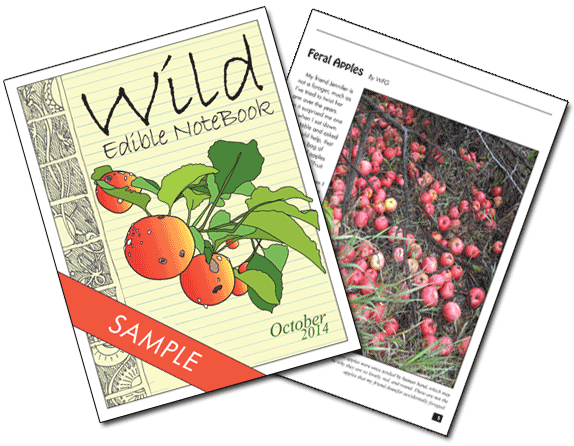
I had no idea some varieties of nightshade had edible berries! I live in Denver had some take up residence in my yard recently, but the berries were red.
Hi. I’m originally from eastern Colorado, and noticed that you said you had found some of these by a fishing pond in eastern Colorado. Can you tell me what pond, and what town? Maybe when I go to visit my parents I can look there. I’m living in the Black Hills of South Dakota right now and found a small black nightshade plant in my back yard once. It’s gone now, but it must grow somewhere around me.
This is an awesome post. I am always worried about trying this plant because I don’t want to misidentify it and cause some serious issues.
We have some black berried plants and a red berried plants in our yard that I always thought to be a type of nightshade, but I have not looked at them extremely close. This year I definitely want to at least start getting more comfortable identifying these.
Thank you for such an informative post. I will also check out what Sam has in his book.
I have a volunteer in my garden I suspect may be this. But I am not 100% sure.
How to identify?
Hi Raiven, do you want to send me a picture? You can use Facebook messaging or drop me a line through the contact form and we can email.
I was looking for new ideas for what to do with the ones I “allow” to grow in my yard. Green chili is a brilliant idea! I think I’ll stick with ham this time, so I can use up the few raspberries I have before the freeze as well. I can always count on you for the best ideas!!
I live on the front range of Colorado and have always called this plant “Garden Huckleberry” (as opposed to true huckleberries). They grew in my parents’ garden for decades and now they have grown for decades in mine. They are by far the most prolific volunteer “weed” in my garden, next to purslane, of course.
Oh how nice to have a yard full! Thank you for the “garden huckleberry” info.
My mother-in-law ordered seeds online marketed as Dahlias, but the later read they only grow from tubers. I transplanted a few of her seedlings into a pot to see what would come up. Looks like this is what we got! My initial search had me concerned since I have young ones that love to sample anything that looks edible. Thank you so much for clarifying the distinction from the poisonous kind.
Wow I found some of these very late in the fall in my Wisconsin garden. I tasted one and it was fruit like, sweet and delicious. I spit it out but was almost sure it was edible due to the taste. Now I finally know! Thanks
Wow! I have always thought that all nightshades were poisonous. Thank you!
Interesting article! I live in Beijing, China, and those nightshades came univited into my balcony, growing like crazy. They invade soil all around. The flowers are white, the berries become dark blue. ASo I assume they can be eaten
Hi there! Thank you for this! Can I send a pic of what’s growing in my garden? I planted watermelon and thought it was that and then it died and came back to life. Now I think the watermelon never grew and it’s just a wild Berry! How cool.
Hi Gilbert, you are probably right, but I am less familiar with nightshades in other countries. I would highly recommend a read of Samuel Thayer’s nightshade chapter in nature’s Garden (2010).
Hi Francis, yes of course, send me a picture! I’ll email you my contact info.
I was very lucky to have my Great Grandparents’s family bring them over to the US when they immigrated here. The berry seeds have been passed down through our generations the sad thing is I don’t have the recipes. I have an old German cookbook but it’s written in German and I don’t read German. Would anyone have any pie, jelly, jam, dumpling, kuchen Wonderberry recipe?
Thank you so much!!
Great article ! I am from El Salvador, and we make delicious and healthy soups (sopa de Mora) with the leaves/flowers. They grow all year round around my house, I will learn how to make the jam now, it sounds great, many thanks.
This is a reply for Natalie…hope she sees it. Actually there are some dahlia varieties that can be grown from seeds. I’ve done it. Most are not very showy, but I like them.
Interesting article. I live in Brazil. Have farmed in both Goias and Mato Grosso states. This plant is a weed in the fields, but for 50 years we have used the berries in jellies, jams, pies and coblers. They are delicious. But we have never eaten the leaves. Will have to try them.
Thank you for sharing that, Silvia. I would like to learn how to make sopa de mora now!
I found this recipe online: http://writinglantern.blogspot.com/2008/08/denna-kuchen-rivel-kuchen-german.html
Cool, thank you for sharing. I don’t not have a good source for the leaves so I have not tried them yet. Apparently they need to be young, not mature plants.
I had a large nightshade plant in the middle of my bushbean 20 gallon felt pot. It was more prolific than anything I planted! I loved snacking on the berries thruout the summer. My beans did well,too. I wonder if they are companion plants.
Oh that’s interesting! Thank you for sharing.
According to my berry book, in discussing the nearly identical S. ptycanthum,
“Underripe berries are toxic. Some foragers eat fully ripe berries, in small quantities, but it is tricky to judge ripeness accurately, and even ripe berries cause intestinal problems in some people.”
And as far as eating the greens, isn’t that guaranteed solanine poisoning, as with anything in the tomato family?
Hi Jason, the black nightshades are one of those plants that have been subject to some misinformation in the wild food literature. It is definitely true you should only eat the berries when ripe. You can “judge ripeness accurately” by the color and after that by the taste. If they are bitter/acrid/disagreeable, don’t eat them. If you are worried about “intestinal problems” which I think probably just means “digestive upset” then just go slow to start. Young black nightshade greens are an important vegetable around the world. They should be consumed boiled, and young, before they flower. I would highly recommend checking out Samuel Thayer’s book, Nature’s Garden, where he debunks the myths using excellent research and dives deep into this topic.
I am from southern and the leaves and berries are widely used in cooking. Local name is ‘manathakkali’ – literal translation fragrant tomatoes. I grow some in a container in Texas, and gather and eat the berries. I use the leaves just as I would use any other greens.
You may be surprised but many nightshades are edible…..and many are poisonous. Bittersweet (solanum dulcemara) is more poisonous then deadly nightshade.
And deadly nightshade is not always deadly. I use it as medicine against pain, cramps….. And have sometimes tiny bottles with alcohol in which i has a few belladonna leaves. (Using at own risk)
Back from medicine which can be dangerous. (Fire, kitchenknife and chainsaw are dangerous too, but i still use this things)
I like peruvian physalis. Lile groundcherry, but taste different. And i dare to grow naranjilla this year…. With luck i harvest next year. There are much fruits from nightshade which are edible, included peppers
I have a volunteer in my yard. I live in Sacramento and I’m not 100% sure what I have is the edible Night Shade.